Categories
- Argentina
- Chile
- Antarctica
- Easter Island
- Falklands (Malvinas)
- Bolivia
- Peru
- Uruguay
- Paraguay
- Brazil
- Venezuela
- Colombia
- Ecuador
- Galapagos
- Panama
- Costa Rica
- Cuba
- Nicaragua
- Honduras
- El Salvador
- Guatemala
- Belize
- Mexico
- Latin American Xmas
Pages
- Street Art of Buenos Aires
- A week in Buenos Aires
- The Jesuit Missions in South America
- Contact Us
- Map of Central America
- First week in Latin America – October 2009
- Home Page
- Map of South America
Archives
- October 2011 (3)
- September 2011 (9)
- August 2011 (10)
- July 2011 (7)
- June 2011 (6)
- May 2011 (11)
- April 2011 (10)
- March 2011 (4)
- February 2011 (5)
- January 2011 (6)
- December 2010 (6)
- November 2010 (4)
- October 2010 (8)
- September 2010 (5)
- August 2010 (7)
- July 2010 (5)
- June 2010 (6)
- May 2010 (6)
- April 2010 (7)
- March 2010 (6)
- February 2010 (9)
- January 2010 (4)
- December 2009 (8)
- November 2009 (5)
- October 2009 (2)
The Jesuit Missions (Bolivia)
30th May 2010
The Jesuits arrived in eastern Bolivia (Chiquitania) in 1691 aiming to convert, civilize and educate the indigenous people in a harmonious social environment. San Xavier was the first mission, followed by 10 others until the Jesuits were expelled from South America in 1767.
.
In a week we travelled a circuit of some 1000 kilometres by train, buses and taxis from Santa Cruz to visit 8 former Jesuit Missions with centuries old restored churches. The region has been declared a Unesco World Heritage site, not only for its churches, but also for the rich indigenous culture.
.
All the churches feature huge, artistically hewn wooden columns supporting exposed timber beams and wood or cane ceilings. The white washed adobe walls are covered inside and out with elaborate decoration, painted in ochre, yellow and black. Mirrors near ground level on the altars taught the heathens how to bow down to God. The churches all face beautiful plazas, the other 3 sides are lined with colonial buildings, their terracotta tiled roofs overhanging the sidewalks are supported by carved wooden columns. One block away the streets are dirt.
.
San José de Chiquitos was founded in 1698. Its beautifully restored church complex, the only one to be built in stone, consists of 4 buildings, taking up an entire city block. Nearby the church of Santiago de Chiquitos, 1754, bears images of the Santiago pilgrim. The mission of San Ignacio de Velasco was founded in 1748. San Miguel dates from 1721, San Rafael from1696. Santa Ana mission, although established in 1755, has a humble church which was built after the Jesuit expulsion of 1767. The Concepción mission was founded in1709 and San Xavier in 1691.
.
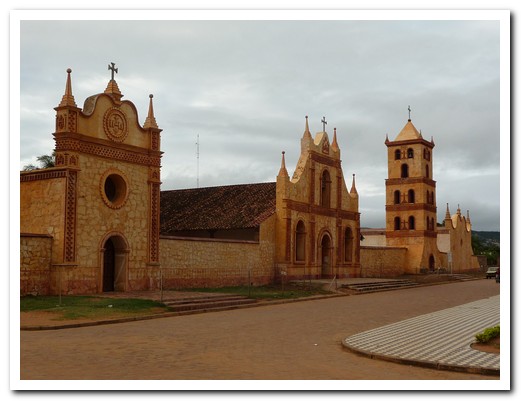
San José de Chiquitos
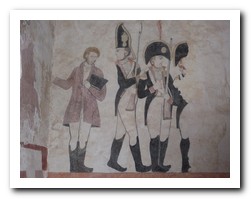
Murals .....
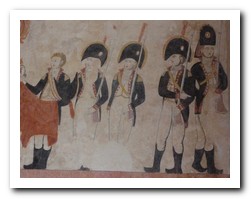
.... found during restoration
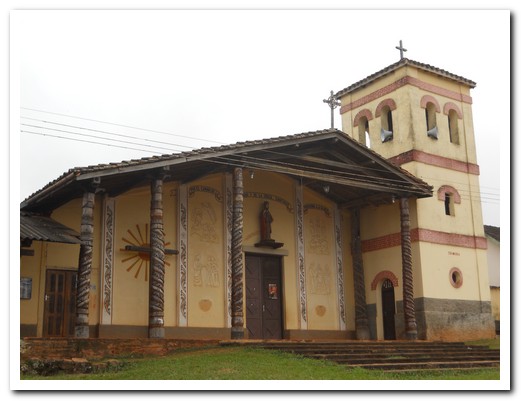
Santiago de Chiquitos
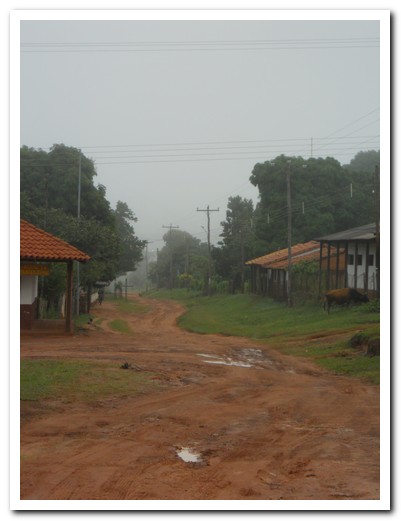
Main street of Santiago
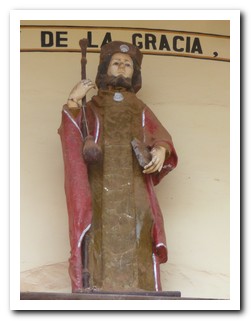
Santiago Peregrino (St James the Pilgrim)

Santiago relief on the 1767 bell
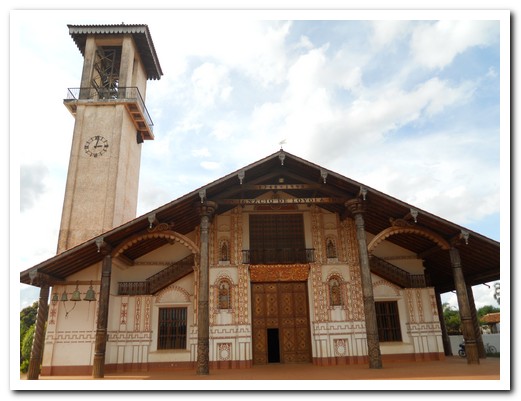
San Ignacio de Velasco

Inside

Native with traditional head dress depicted as an angel on the wall of the church
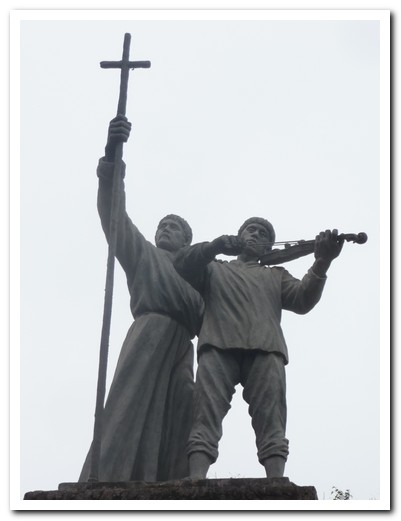
Statue in San Ignacio - music was important on the missions
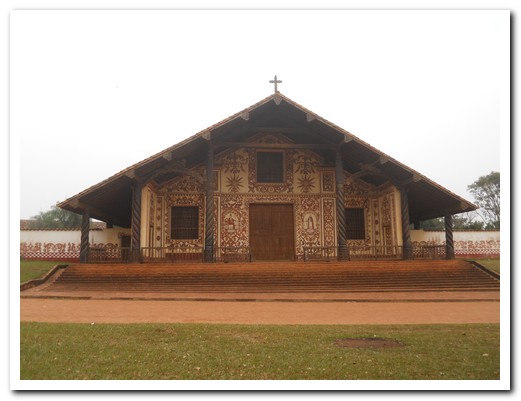
San Miguel
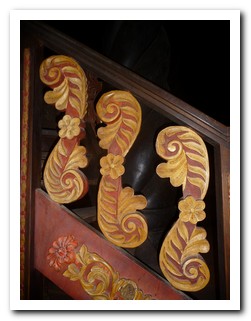
Stylized seahorses leading to the pulpit
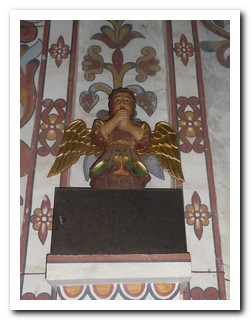
Interior decoration

San Rafael with a carved wooden bell tower
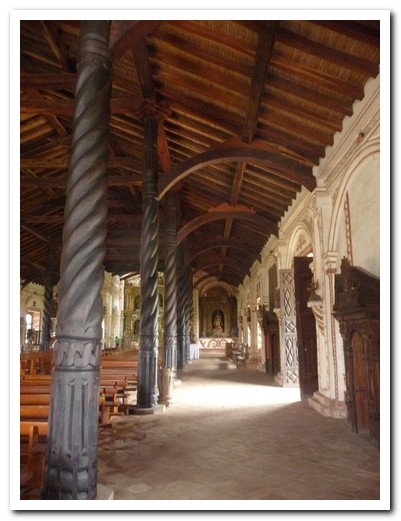
The interior
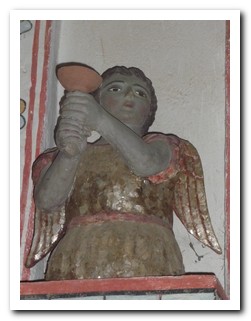
Carving of an angel

One of the music murals on the wall
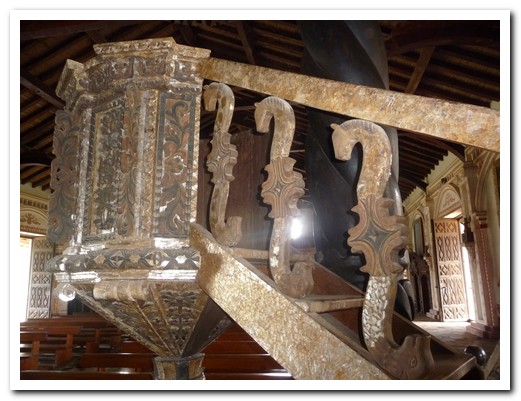
Seahorses as envisioned by native craftsmen
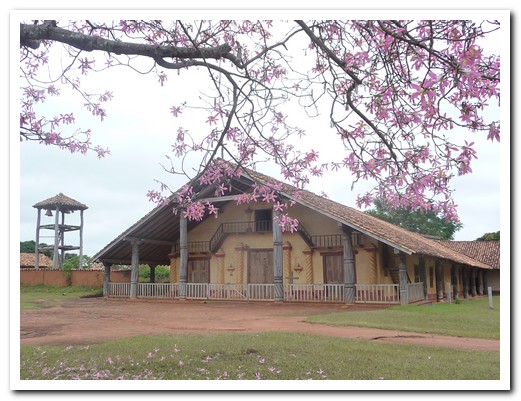
Santa Ana
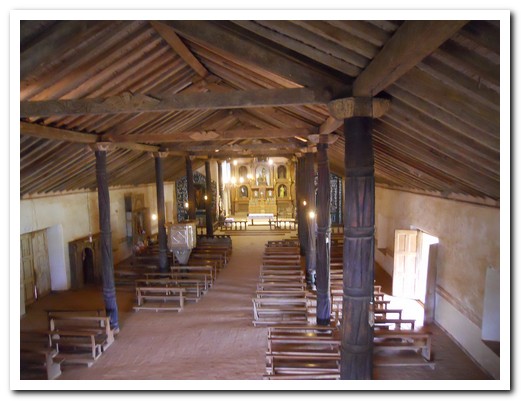
Inside
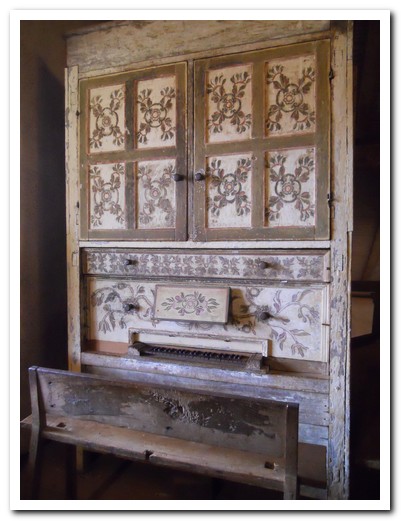
Organ found during restoration is still used
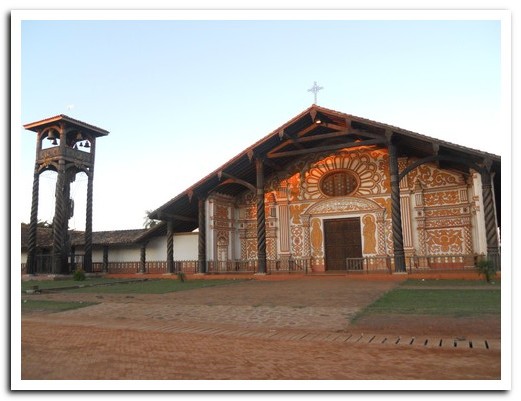
Concepción
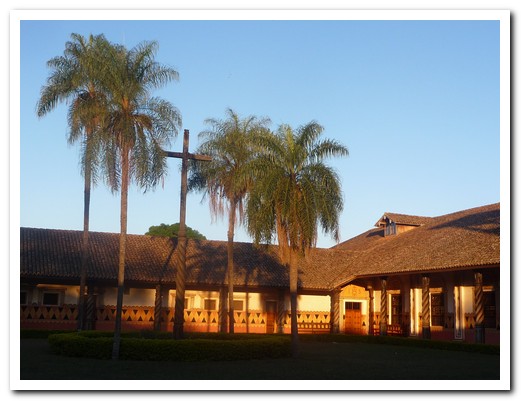
Inside the Mission complex
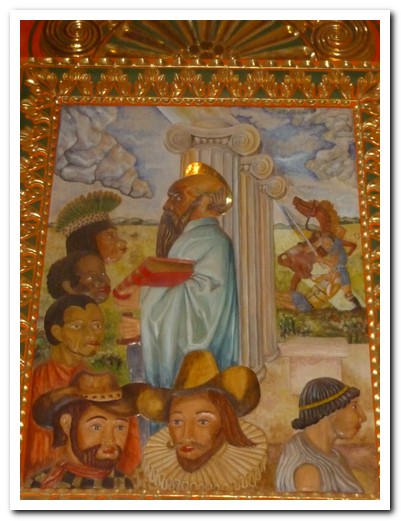
Painting inside the church
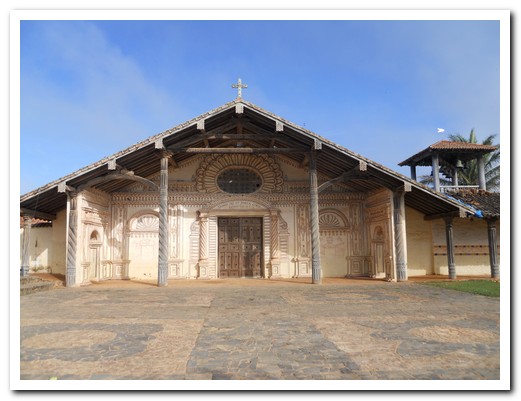
San Xavier

The only church with painted columns, beams and ceiling
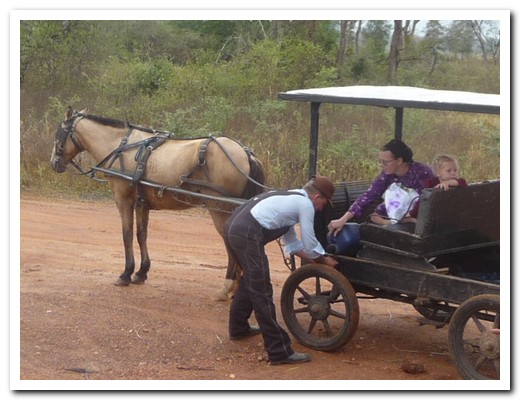
Mennonite farmer waiting for the bus
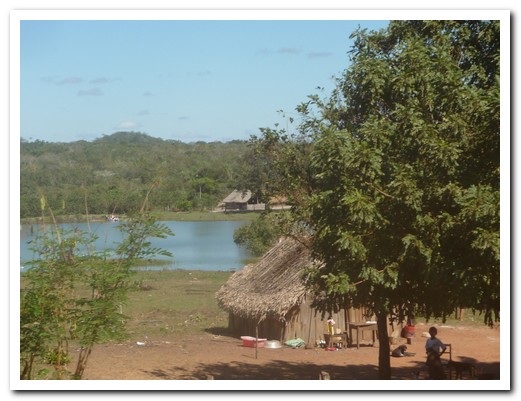
Typical Chiquitana village
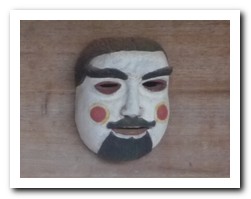
Masks ....
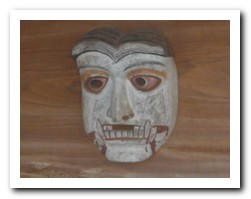
.... used in ceromonial dances
Santa Cruz – Bolivia
24th May 2010
Santa Cruz, in the eastern lowlands of Bolivia, is 1 hour from La Paz by plane and 23 hours by bus. We took the plane. There are tall white Mennonites strolling around the city, the men all dressed alike in overalls and straw hats, the women in the same coloured conservative dresses.
.
Near Samaipata, 120 kilometres away, is the mystical carved mountain top used by the Pre Incas 3000 years ago, and later the Incas, as a temple to the sun and moon. Samaipata is a nice little place so it is no surprise that many foreigners live there. In the nearby jungle are many lovely walks. Just out of town is the animal refuge El Refugio where sick and injured animals are cared for by volunteers.
.
Not far away in La Higuera, the Bolivian army captured and killed Che Guevara.
.
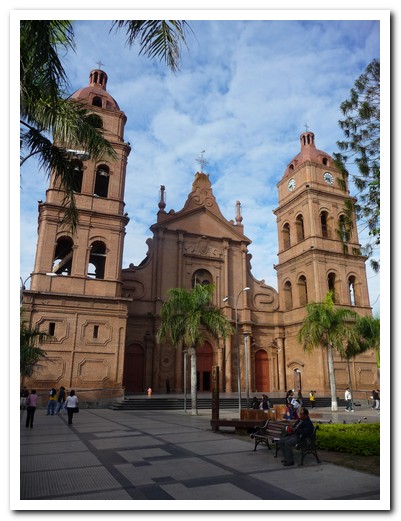
Santa Cruz cathedral
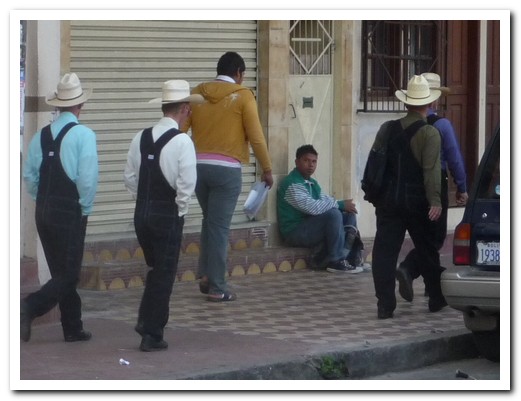
The Mennonites come to town
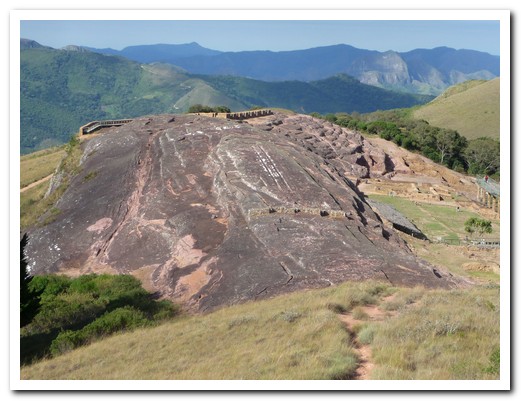
Ancient hilltop temple near Samaipata, called El Fuerte by the Spanish
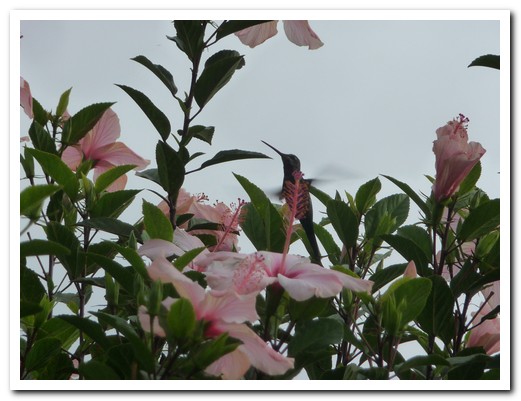
Tiny hummingbird in the hibiscus
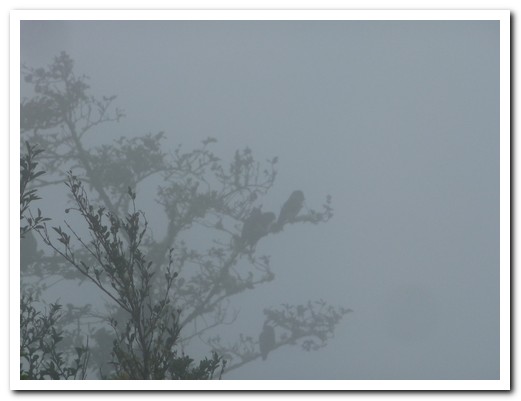
Parrots in the mist
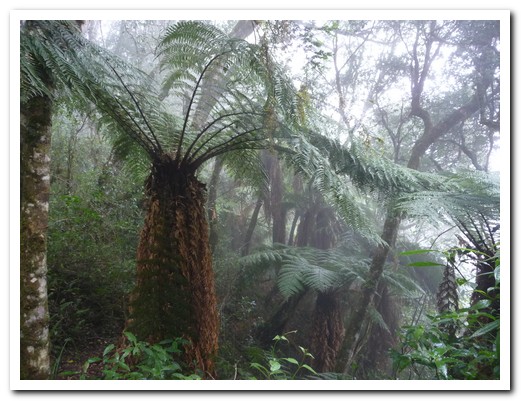
A forest of giant tree ferns, hundreds of years old
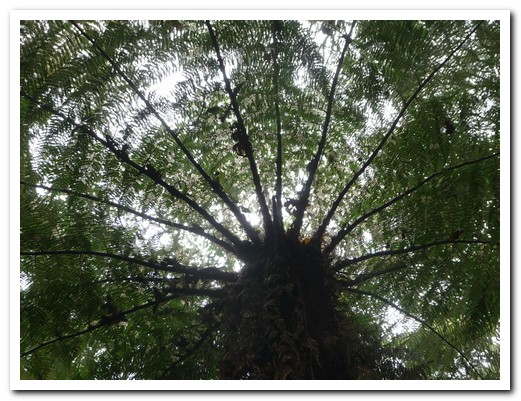
The ferns grow 1 centimetre a year - this one was here before the Spanish
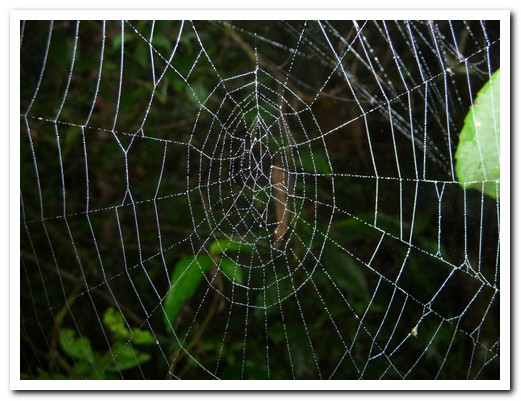
Spider web
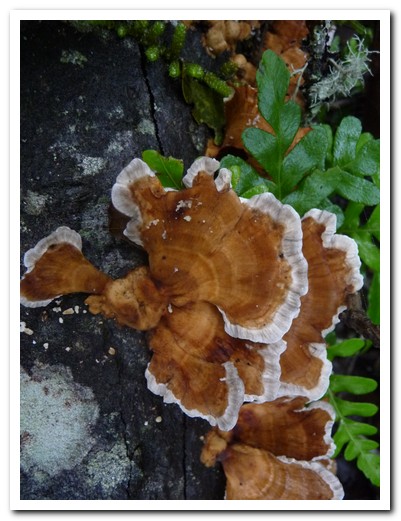
Fungus
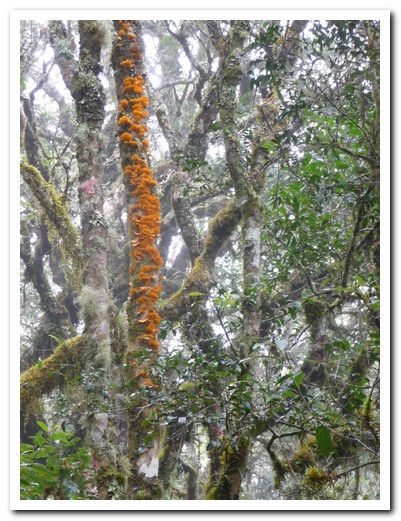
Another type of fungus
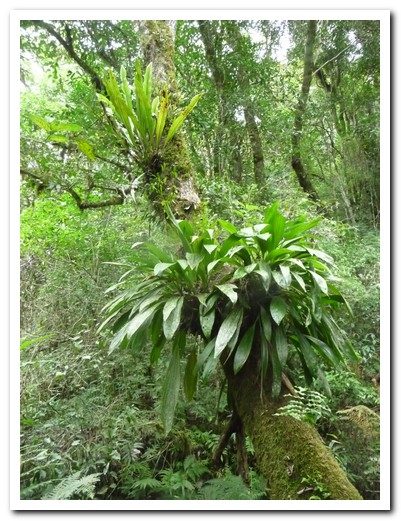
Orchids growing in the tree

Knot tree
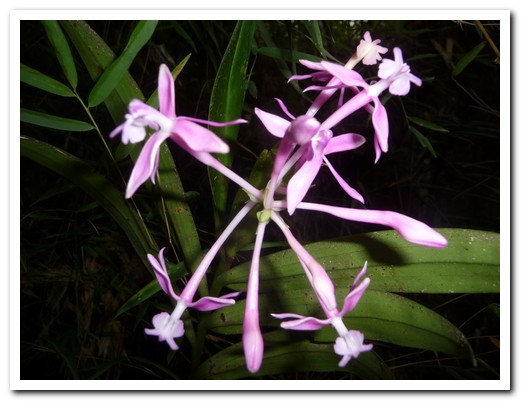
Orchid flowers
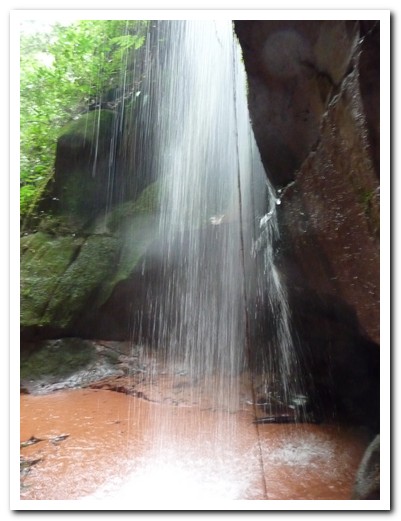
One of many waterfalls
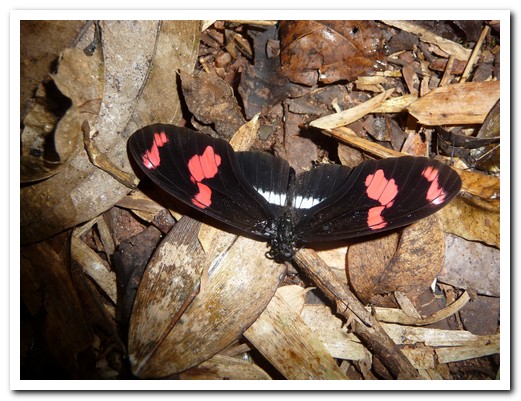
Butterfly
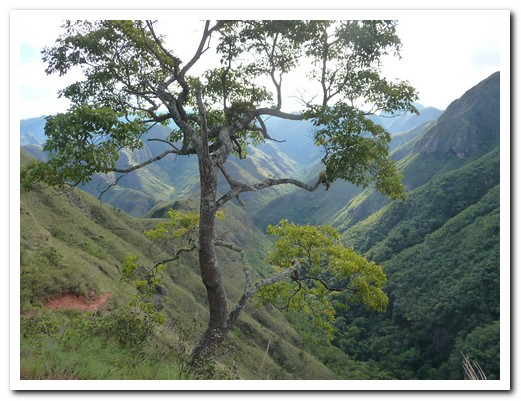
Beautiful valleys

Common parrot
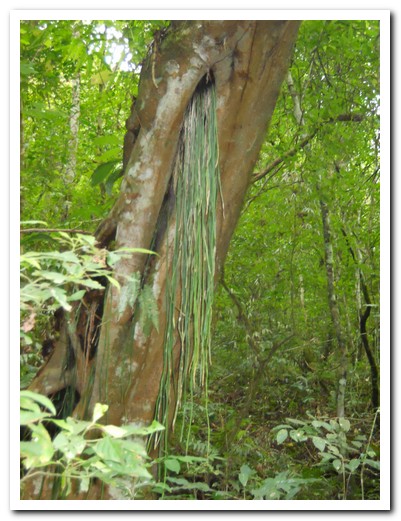
Strange fern growing from the tree
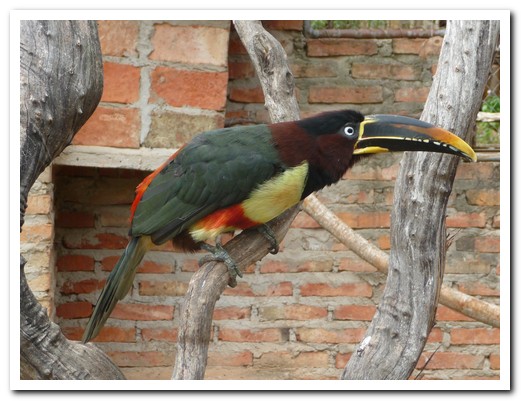
Tucan in El Rufgio
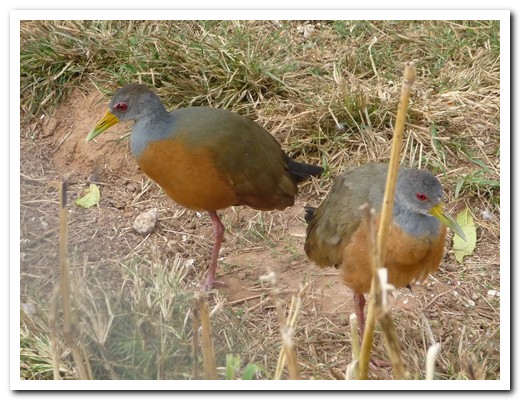
These are the real road runners!
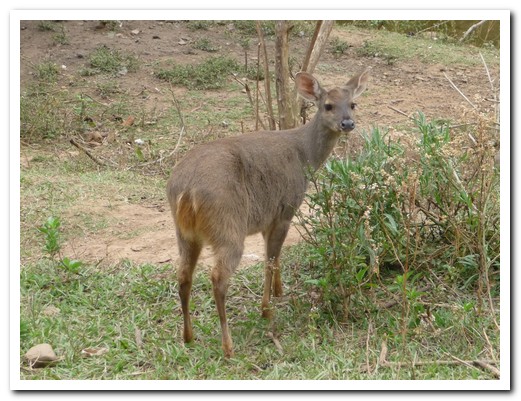
A native orina

One of the many monkeys
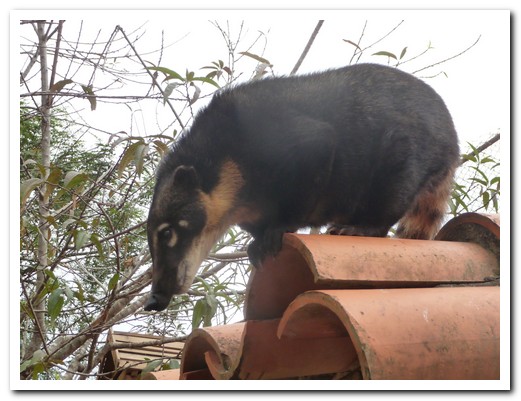
What animal is this?
To Rurrenabaque by boat
16th May 2010
Continuing our trip with Deep Rainforest, interrupted due to a roadblock at Caranavi, we travelled 6 hours north of La Paz on a nail biting bus ride to Teoponte, part of which could have been on the world´s second most dangerous road.
.
From there we boarded a long river boat powered by an outboard motor, expertly manouvered through the rapids by Herman and Camisas for a 3 day trip down the Rivers Kaka and Beni to Rurrenabaque in the Bolivian Amazon. Such a memorable trip it was, gliding with the current of the river, thick jungle of the Madidi National Park all around us.
.
We camped 2 nights on the river banks, went piraña fishing (Jeff was the only person to catch one) and had jungle walks with Ivan, our guide, opening up a space ahead with his machette and explaining the medicinal value of various plants. Carmén, the cook, was up well before dawn cooking up huge meals for 12 tourists and 4 crew.
.
Rurre, as the locals call it, is a real jungle outpost where canoes arrive at the market on the river bank. The amazing sunsets are best watched from an open air thatched roof bar beside the river.
.
We flew back to La Paz on an Amaszonas Airline 19 seat Metro. What an experience – taking off from the rough grass airstrip and flying through a gap in the snow covered mountains to land at one of the world’s highest airports .
.
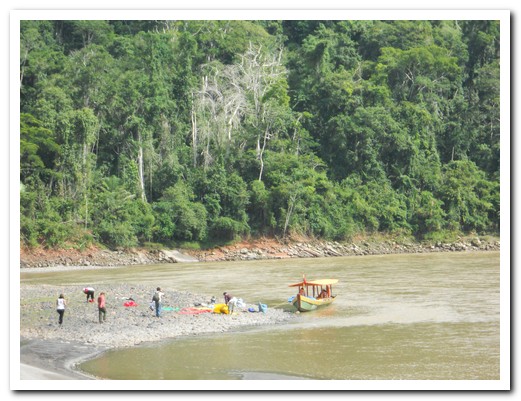
Our boat

Gliding down river
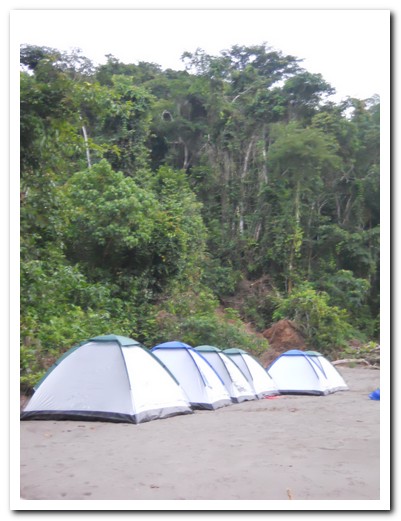
Camping on the river bank
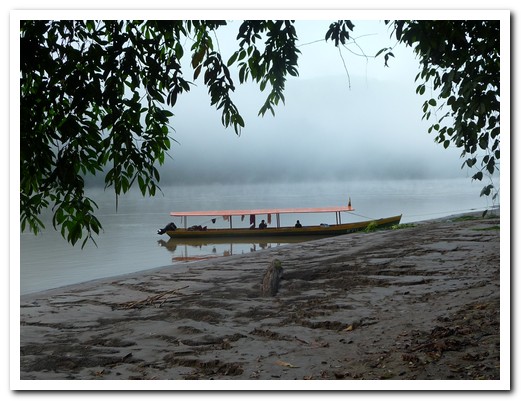
Early morning mist
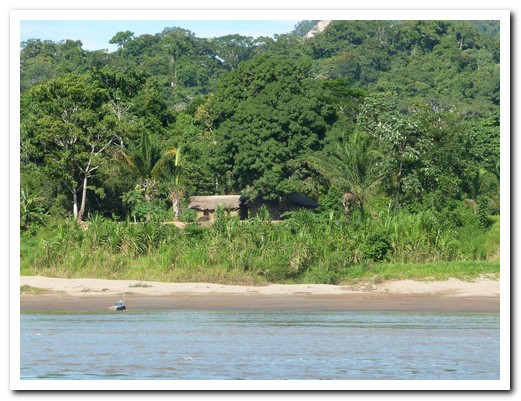
Village on the river
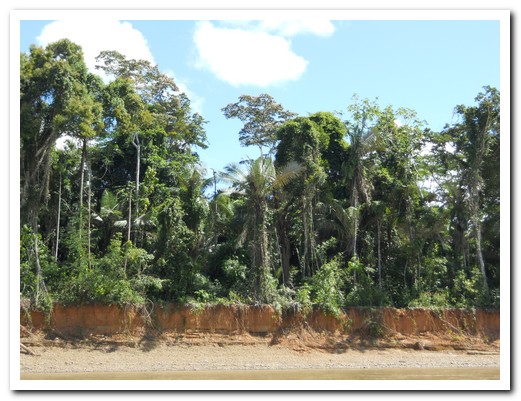
Dense jungle lines the river
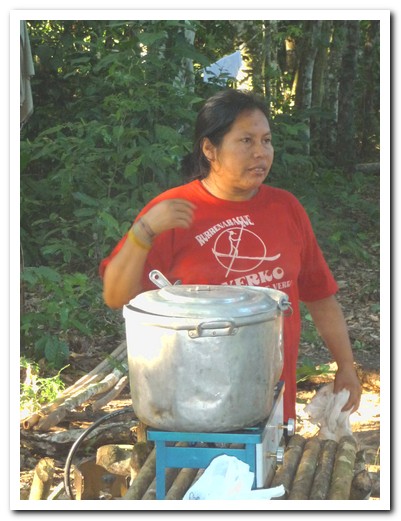
Our cook Carmen at work
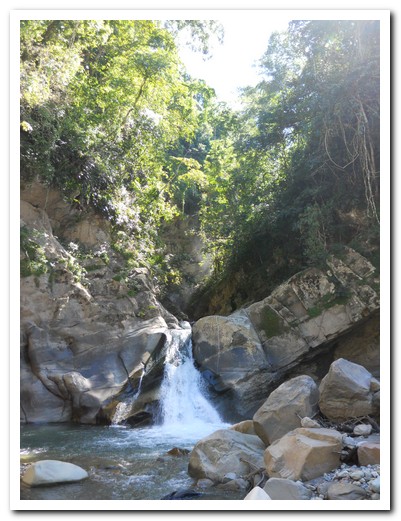
Waterfall and swimming hole
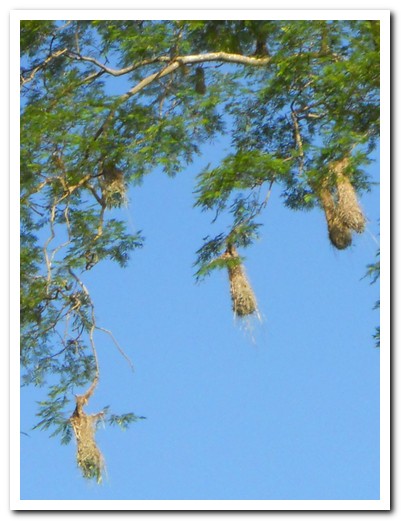
Hanging nests of the Oropendola birds
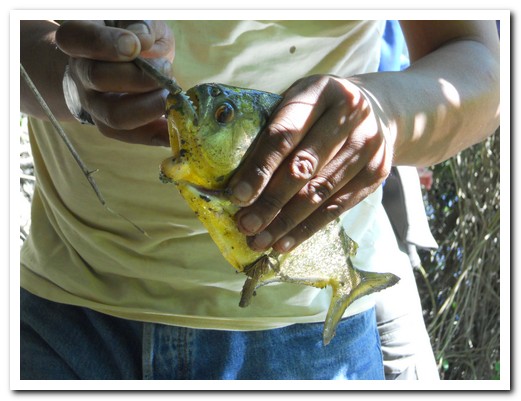
Jeff's piraña
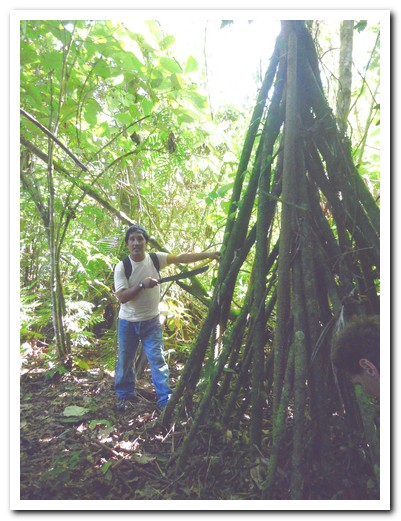
Ivan with his machette
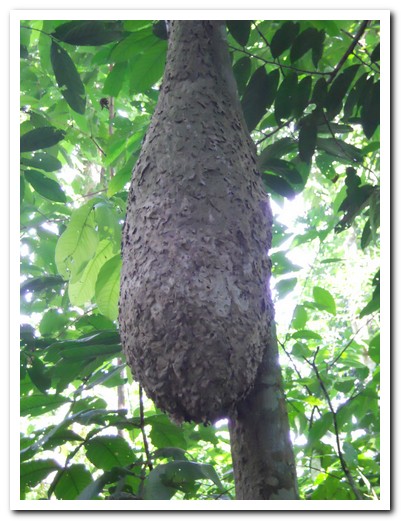
Termite nests attached to a tree
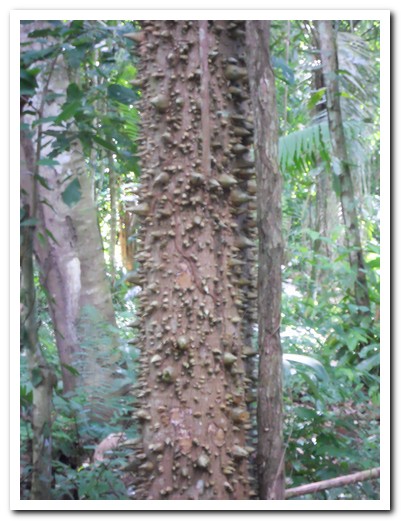
Spiny tree in the jungle
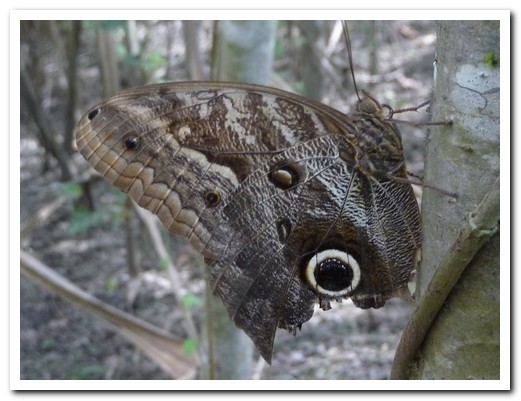
Moth disguised as an owl
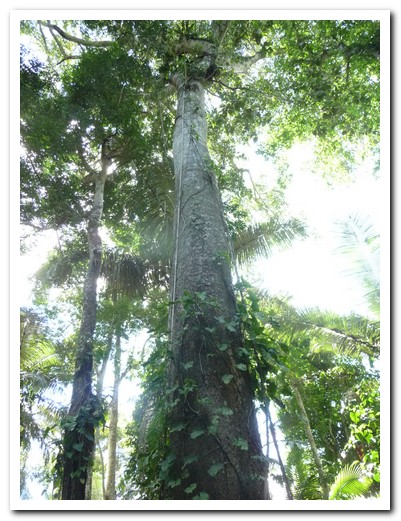
Looking up into the canopy
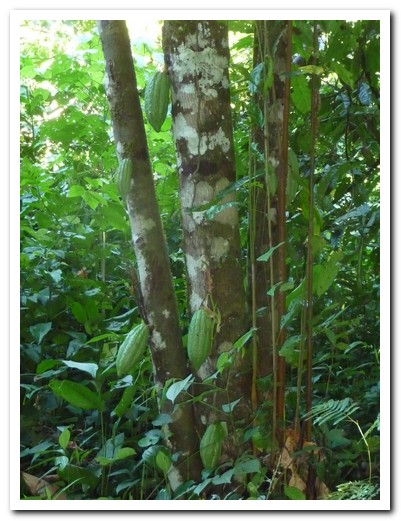
Wild cocoa growing in the jungle
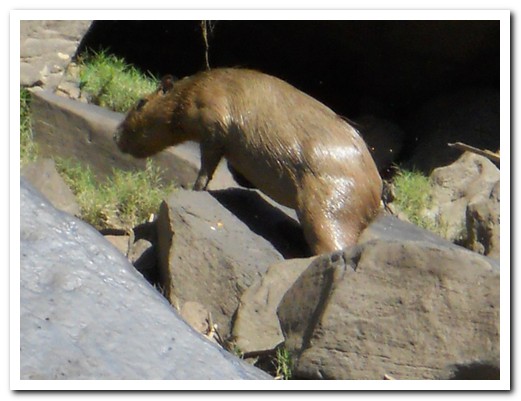
Capibarra leaving the water (giant guinea pig)
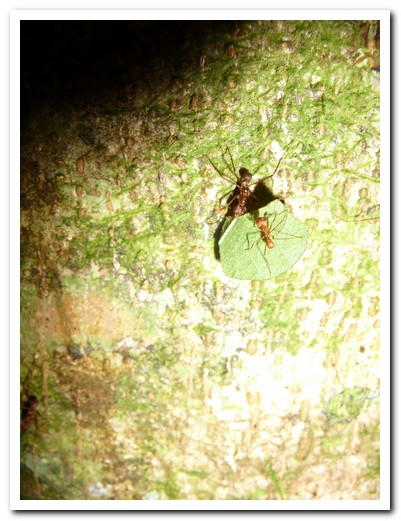
Leaf cutter ants at work
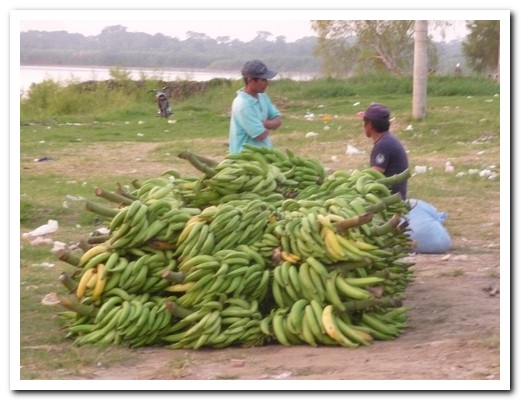
Waiting for the banana boat at Rurrenabaque
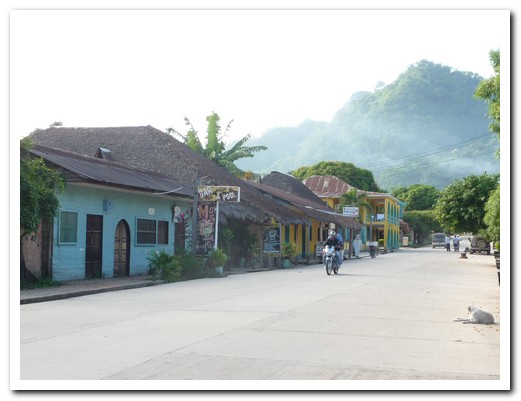
Sleepy Rurrenabaque
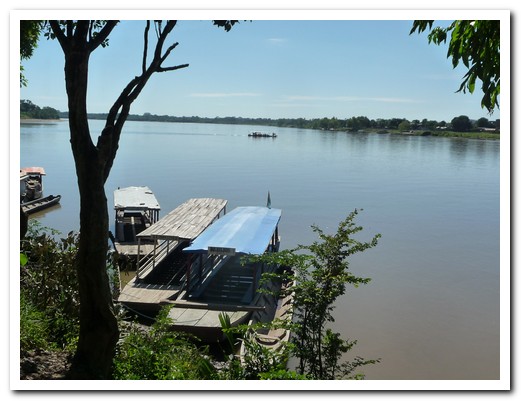
Rurrenabaque river bank
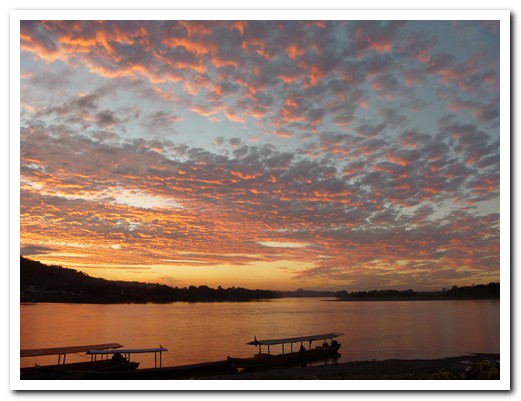
Sunset over the river at Rurrenabaque
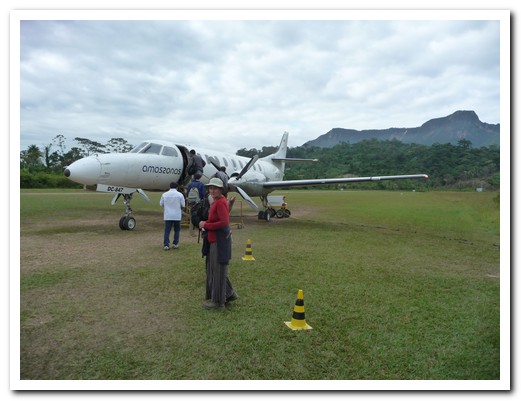
Back to La Paz the quick way
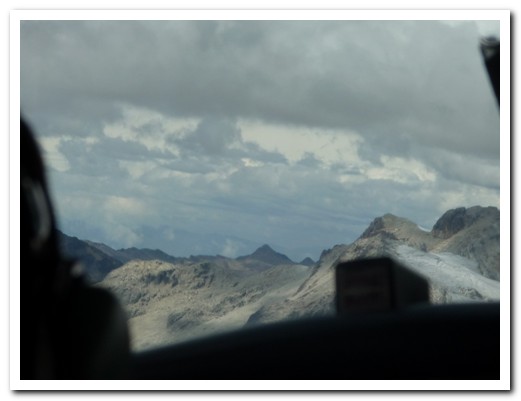
Flying between mountain peaks
Sorata trek
11th May 2010
There are many trekking opportunities from La Paz and many adventure companies. We chose a trek for 2 people with Zig Zag Eco Tours starting in the peaceful mountainside town of Sorata (2700 metres), 3 hours north of La Paz. The bus makes its way down a spectacular valley dotted with communities and their colourful fields of maize.
.
Together with our experienced guide Ivan and great cook Syrle, we began the punishing climb up to the sacred Lake Chillata at 4200 metres where we camped for 2 nights beside the lake. The snow capped mountains were reflected in the still water, the fog rolled in and out. Our packs and the rest of the gear went up ahead on 2 mules led by Don Vicente.
.
The next morning we set off in the mist to climb up to Laguna Glacial at 5038 metres. Syrle had made a delicious picnic lunch which we enjoyed beside a stream below the glacier at 4800 metres with views down to Lake Titicaca. Lack of time and fitness as well as the high altitude prevented us from going all the way to the lake but we were more than happy to turn around where we did.
.
Our final day was the steep descent back down into the cloud filled valley. The weather was perfect, the Illampu mountains clearly visible behind us as we trekked towards Sorata.
.
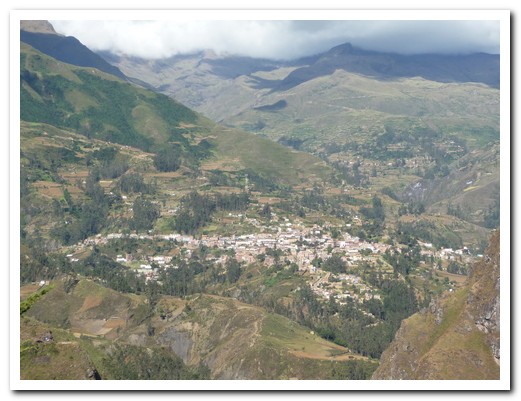
Sorata nestled in the mountains
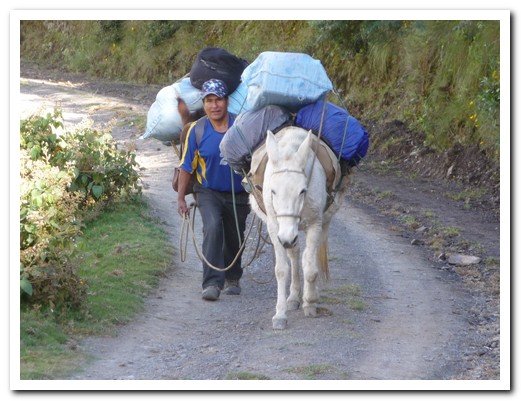
Don Vicente and his mules carried our equipment and food
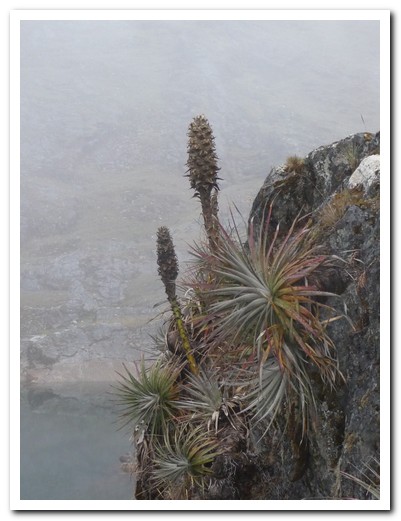
Bromeliads clinging to the rock
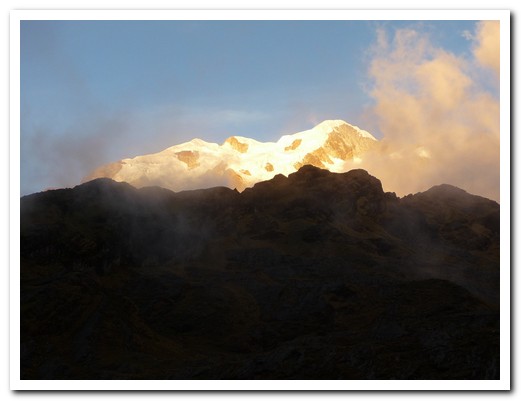
The mountains behind Lake Chillata
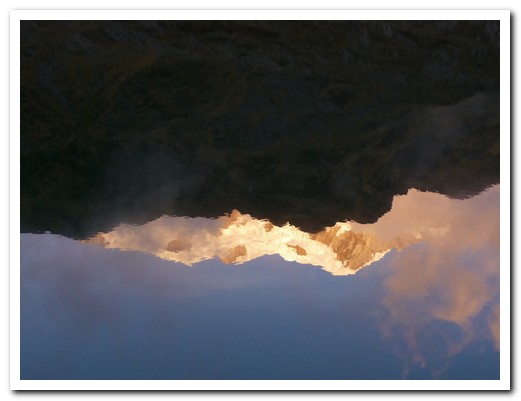
Reflection of the mountains in the lake
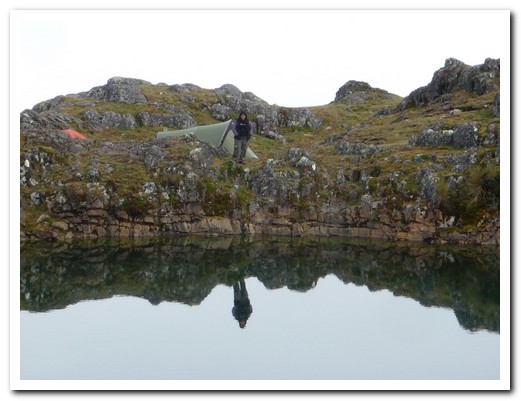
Syrle guards our tent while we trek
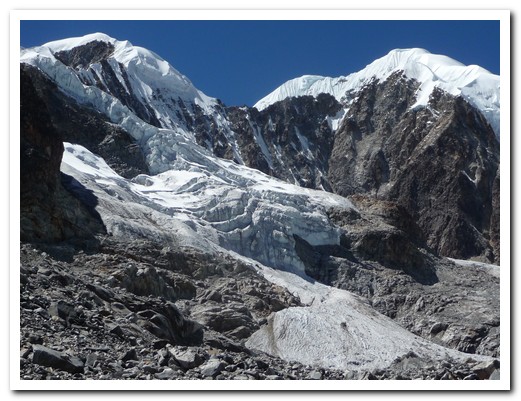
Glaciers from 4800 metres
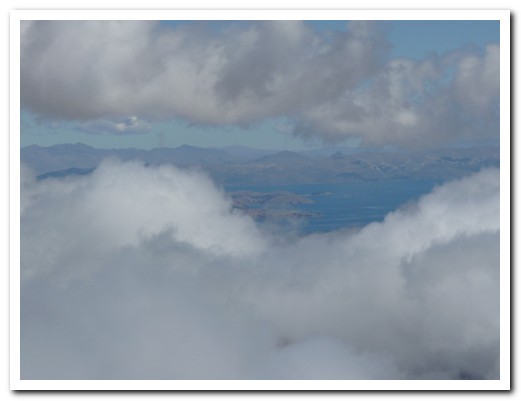
Lake Titicaca from 4800 metres
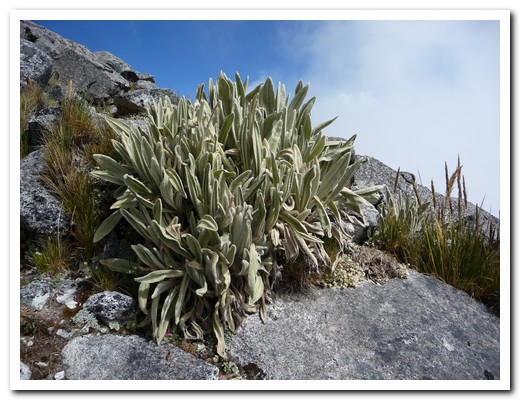
Strange hairy plant growing above the tree line
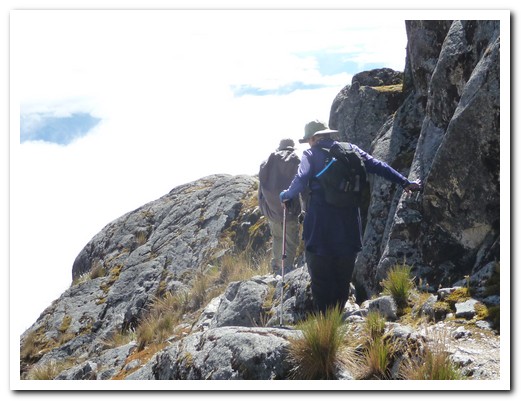
Slow going
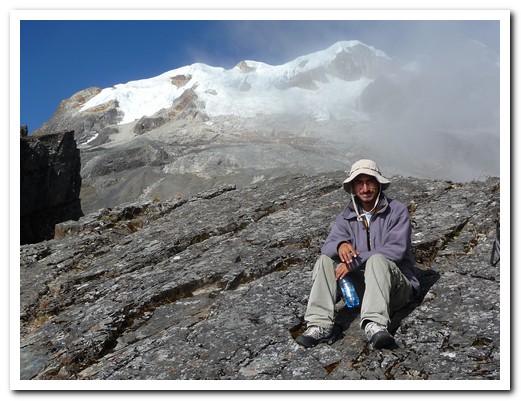
Ivan takes a rest
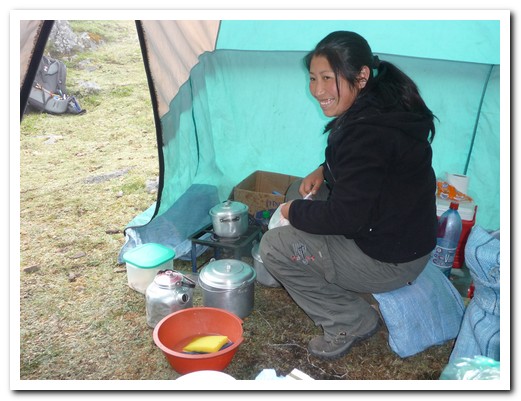
Syrle cooks us delicious meals on one burner
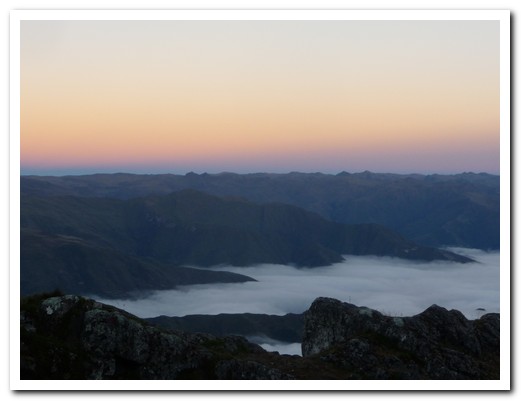
Dawn at 4200 metres, the valley below filled with cloud
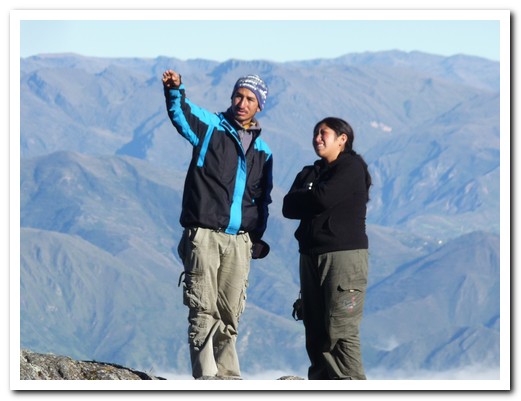
High altitude instructions
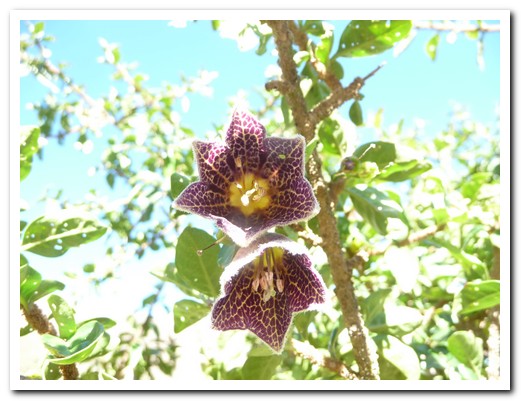
Beautiful high altitude flowers
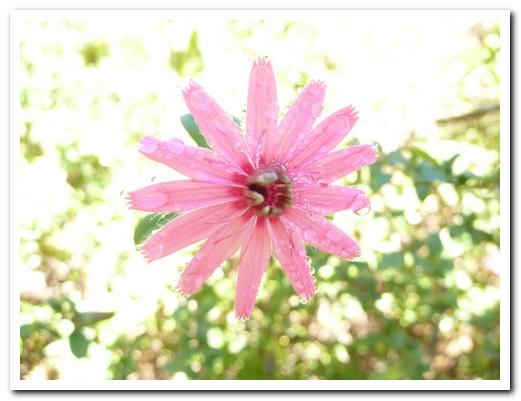
Morning dew on the flowers
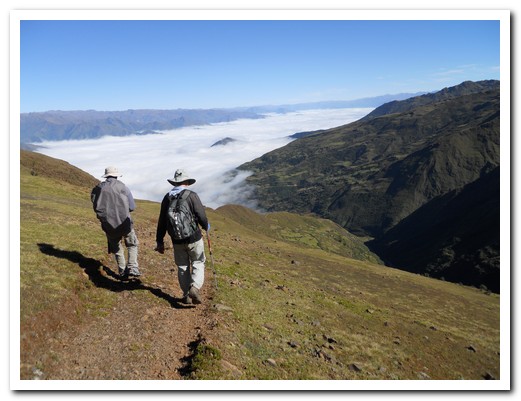
Heading back down
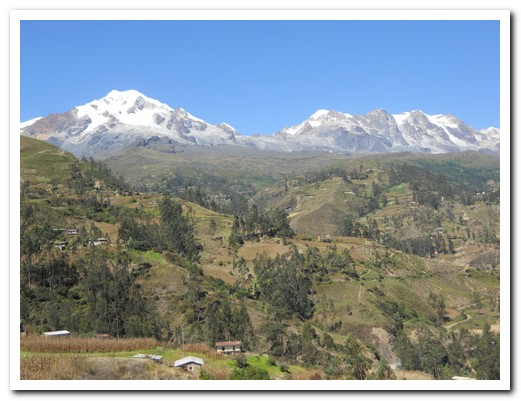
Leaving behind the Illampu mountains
From the mountains to the jungle
06th May 2010
From La Cumbre at almost 5000 metres in the Cordillera Real north of La Paz, we began the Choro trek organized by Deep Rainforest. We set off down a 900 year old stone footpath covered in ice which soon melted as we descended steeply. The path was the main route between the Altiplano and the Amazon region and is still used and maintained by the small communities living along the way who travel up and down on foot.
.
The first day, led by our capable guide Guido, we descended 2000 metres. Our muscles felt it the next day descending another 800 metres before a steep climb after which the path levelled off to follow around the mountainside hundreds of metres above the valley.
.
The treeless slopes and grazing llamas gave way to forests of trees covered in old man’s beard, supporting orchids and bromeliads getting moisture from mist off the waterfalls and clouds filling the valleys. We camped 2 nights perched on the side of mountains with spectacular views across the valleys.
.
We set off at dawn on our last day, the rainforest dark and dripping moisture, the path overgrown in places. We came across a little bent up old Japanese man, Tamiji Hanamura, 89 years old who had been living by himself in this isolated spot for more than 50 years. He loves to talk to visitors and show them his many post cards from different parts of the world and shares his lovely garden with campers.
.
Our trek ended in Chairo at 1300 metres from where we took a scary taxi ride up to the hill town of Coroico where we spent the night before returning to La Paz. Between La Paz and Coroico used to be the “world’s most dangerous road”. Now that there is a new road for traffic, tour operators offer “the world’s most dangerous bike ride” on the old one.
.
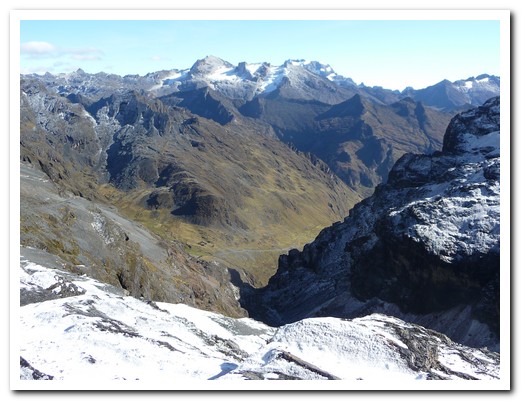
Starting out in the snow at almost 5000 metres
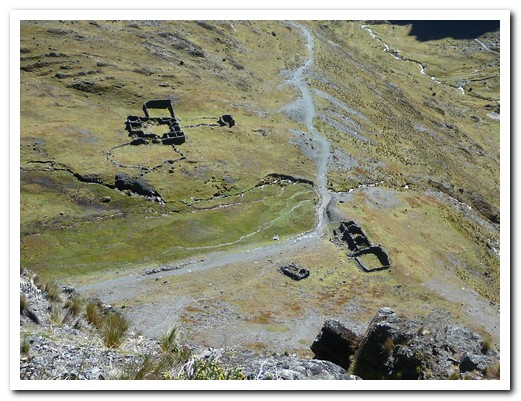
Ruins of Inca resting places along the trail
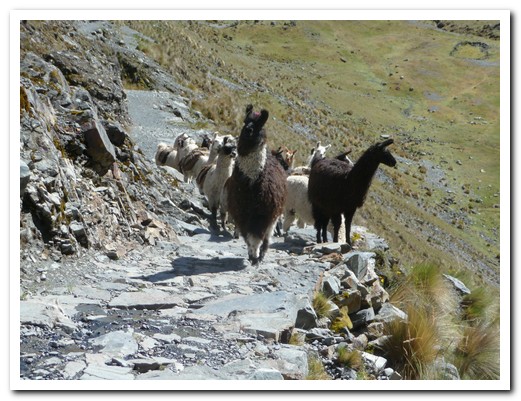
Llamas on the path
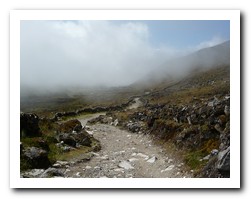
The clouds fill the valley
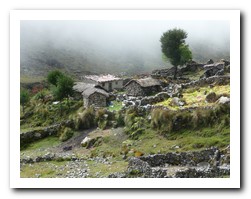
Leading to the village
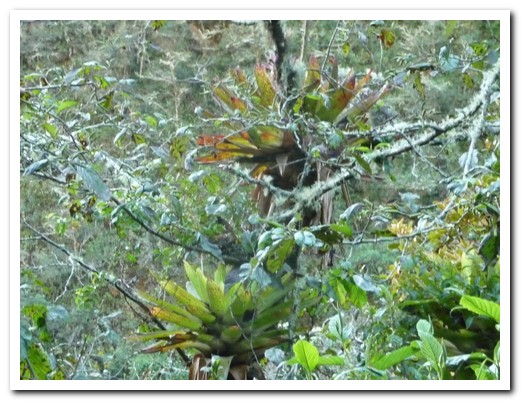
Bromeliads grow in the trees
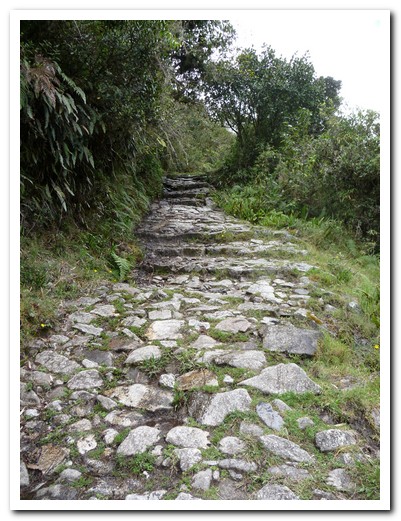
Beautiful 900 year old path
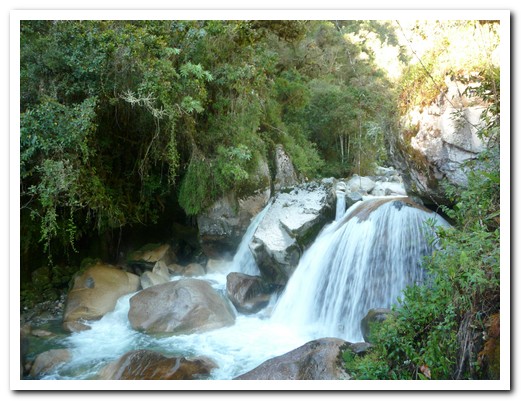
One of many waterfalls
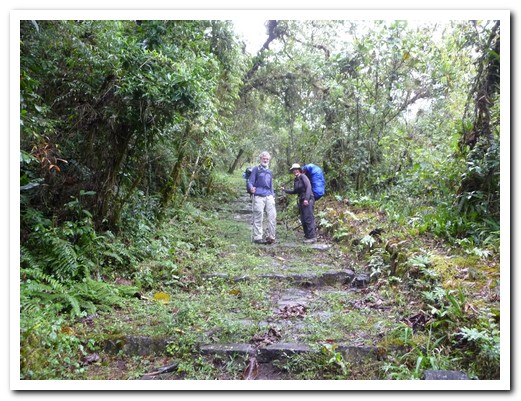
Climbing the Cuesta del Diablo (Devil's Hill)
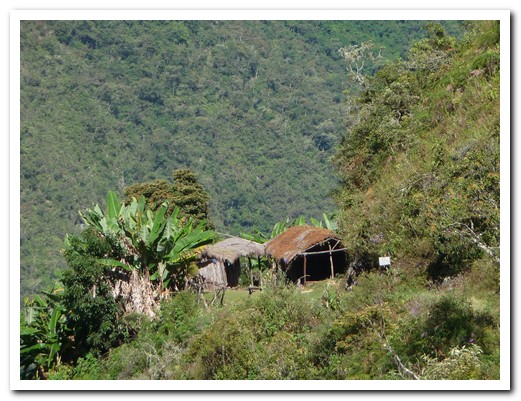
Overnight stop with a view
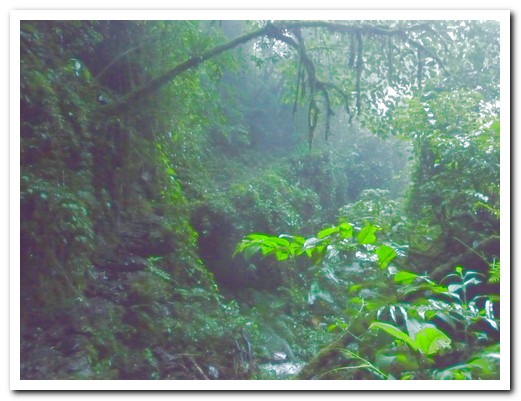
Now we are really in the jungle!
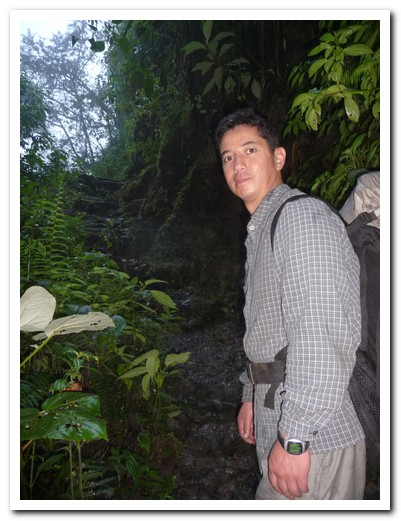
Our guide Guido stops to wait for us oldies
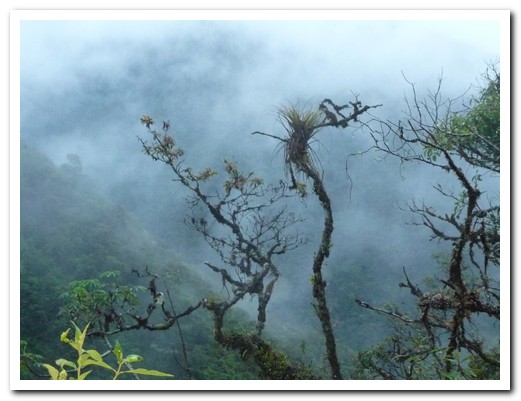
Inside the cloud forest
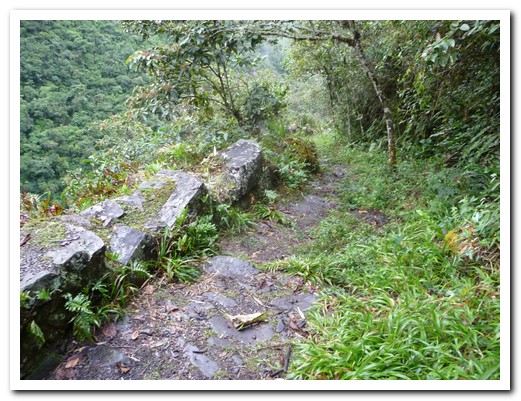
Ancient walls retain the path
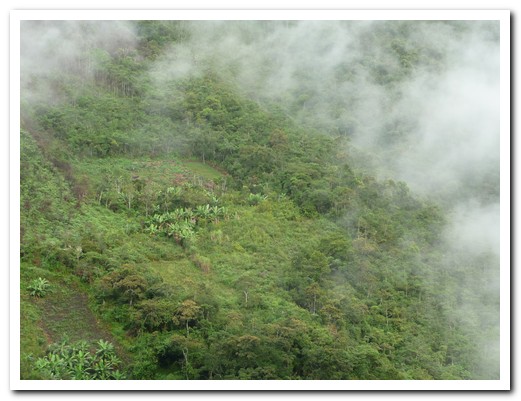
The gardens are almost vertical
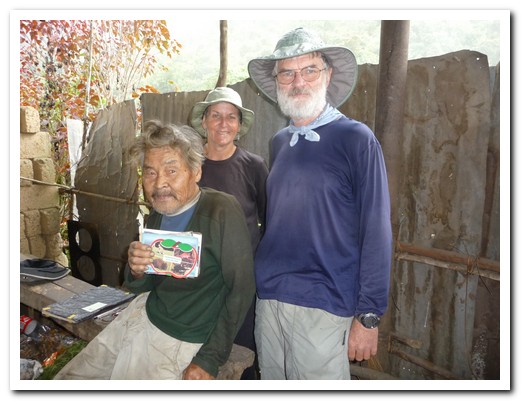
Mr Tamiji Hanamura enjoys talking to passing visitors
La Paz
01st May 2010
From Cochabamba our bus struggled up towards La Paz, reaching the Altiplano at over 4400 metres, passing lone farms where people were cutting wheat by hand and small pueblos where busy markets were in progress.
.
The first sighting of La Paz city (3660 metres) spilling down both sides of a steep canyon and surrounded by snow capped peaks is always breathtaking (the altitude is breathtaking as well). Once in the city there is hustle and bustle everywhere. Everything is for sale in the streets even dried llama fetuses.
.
The Aymara women (from around Lake Titicaca) wear bowler hats, brightly coloured full skirts and intricate shawls (mantas). Years ago, a local English businessman received a shipment of mens bowler hats by mistake. He managed to convince the Bolivian women to wear them and the new fashion took off.
.
The shoe shine men hide their identity behind ski masks and baseball caps to avoid social stigma.
.
Not far from La Paz are the ruins of Tiwanaku, a pre Inca ceremonial centre, and the most important archaeological site in Bolivia. It is slowly being excavated and partly restored.
.
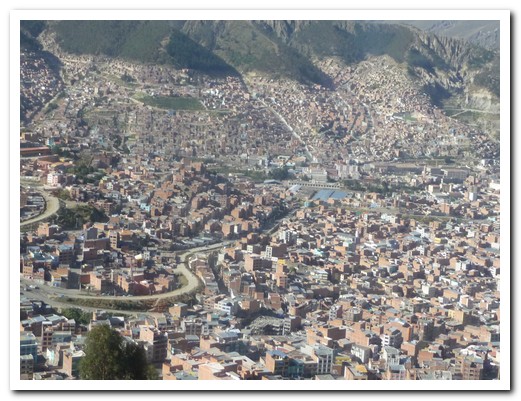
La Paz
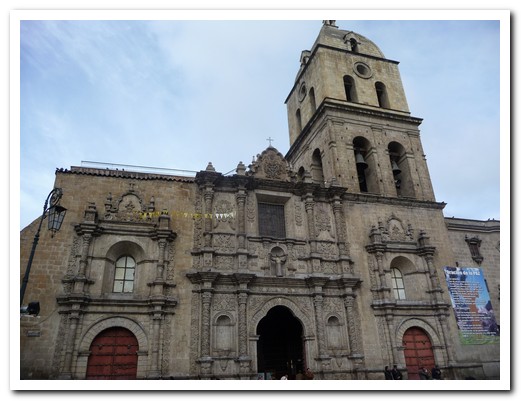
Iglesia San Francisco
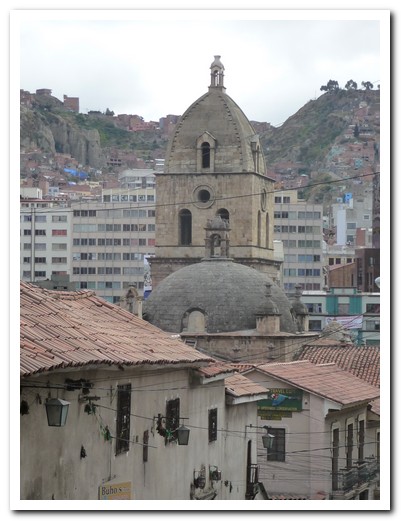
The back of Iglesia San Francisco
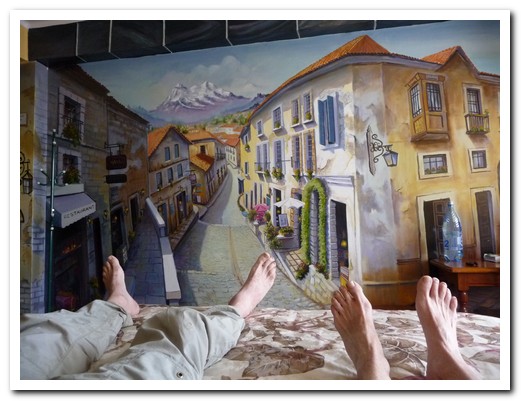
Our bedroom in Hostal Estrella Andina
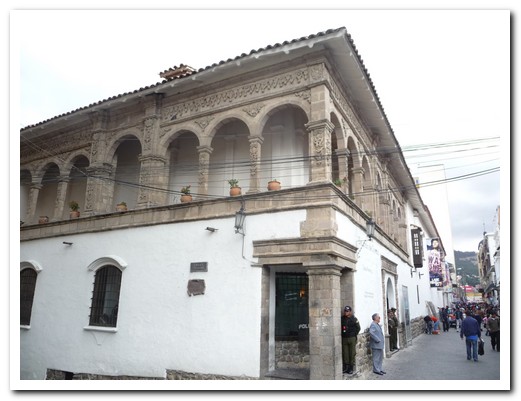
The old centre
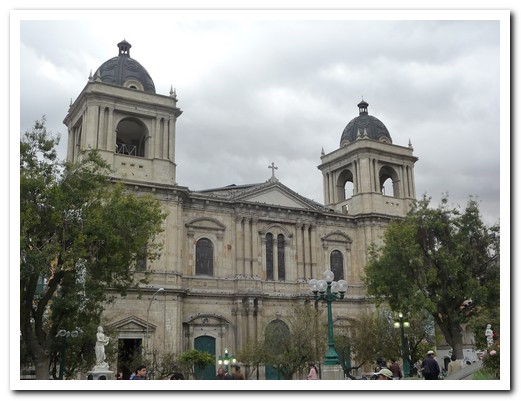
La Paz Cathedral
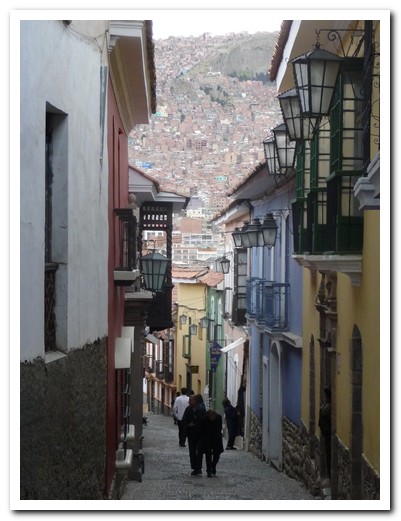
The original Spanish area
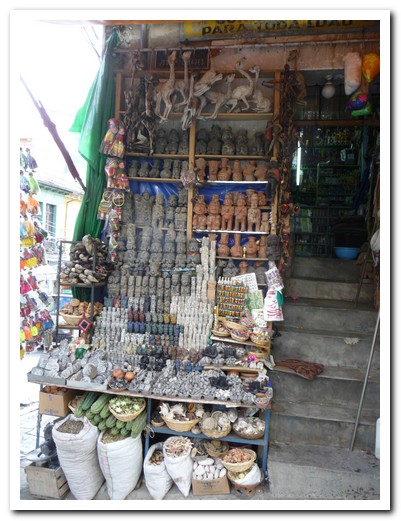
Witchcraft stall
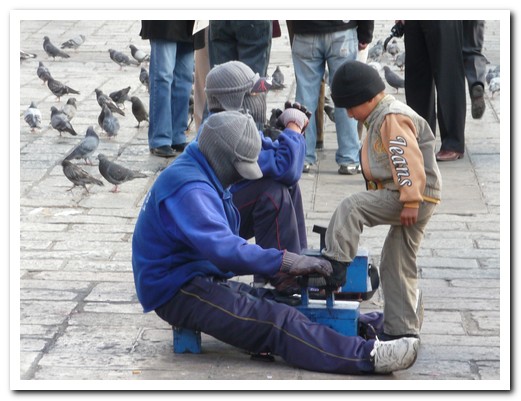
Shoe shiners
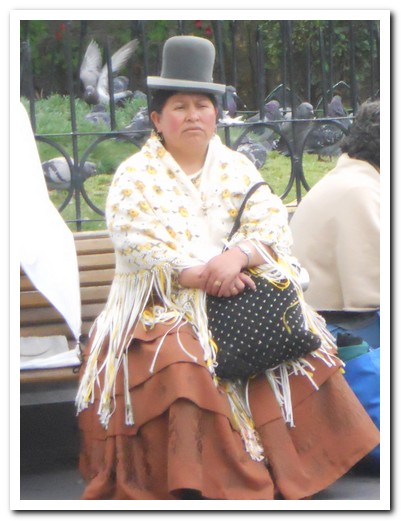
Typical Aymara dress
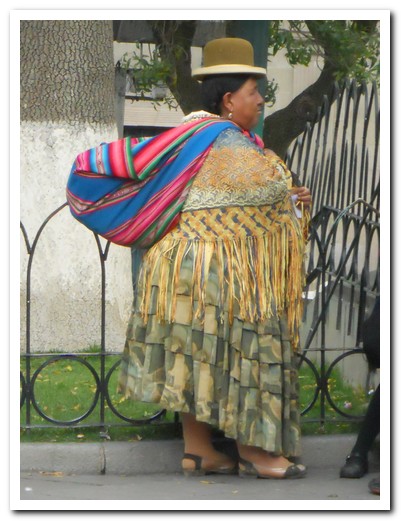
The Cholas wear beautiful skirts and shawls

Partly reconstructed Akapana Pyramid at Tiwanaku
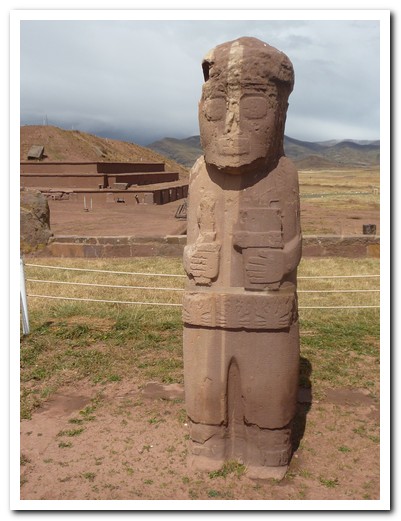
Stone monument (different colours from being half buried)
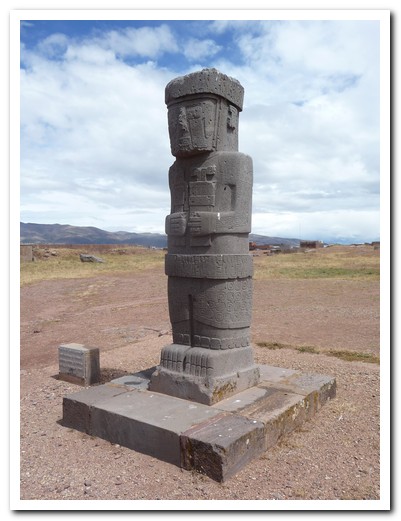
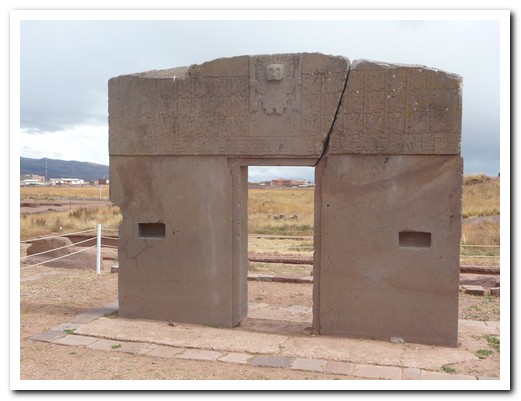
The sun gate with calendar across the top
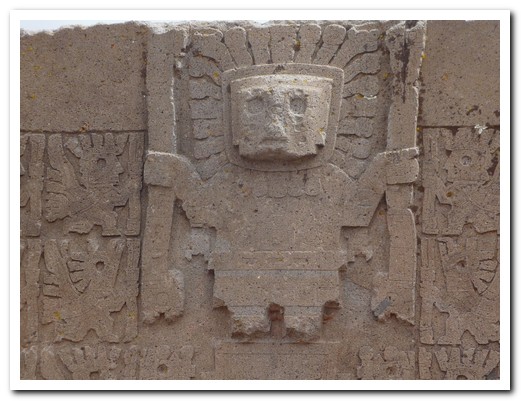
The sun represents the month of September
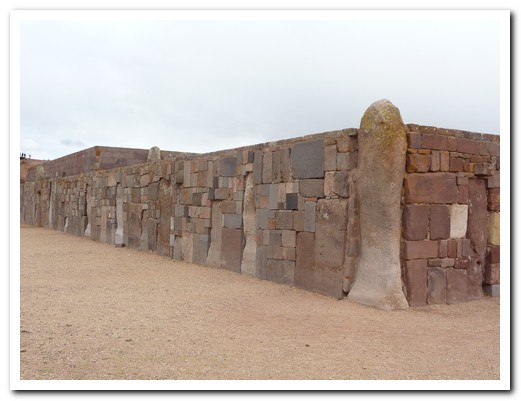
Different rocks were used for the east and north walls
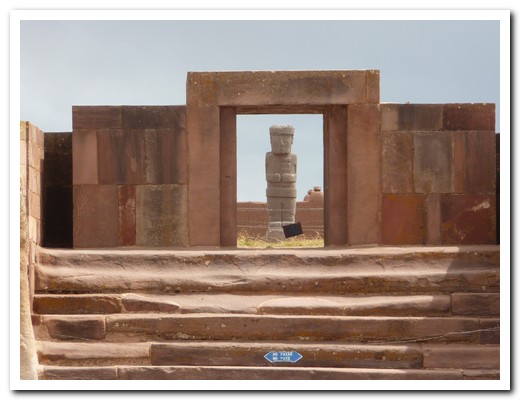
The sun shines through here at dawn on the 21st June
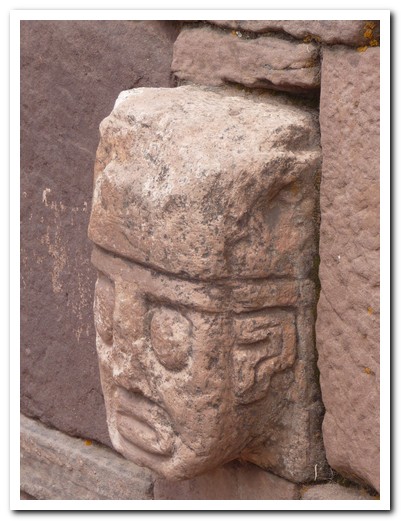
One of the carved heads in the wall of the subterranian temple (note wad of coca leaves in one cheek)
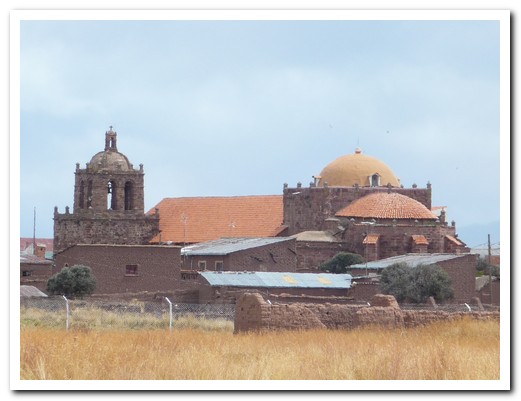
The Spanish took stones from Tiwanaku to build this church nearby